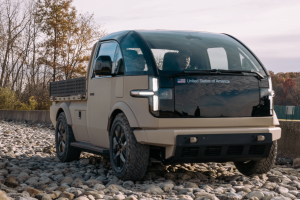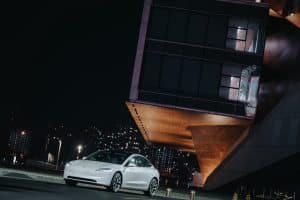Mercedes CTO, Markus Schaefer, has confirmed that the automaker’s autonomous driving system DRIVE Pilot will be making its way to China to challenge Tesla’s Full Self Driving offering in the country.
Mercedes made waves in the auto industry earlier this year when it became the first automaker certified to operate level 3 autonomous driving vehicles in the United States, with the first State being Nevada. Despite its relatively low operating speed of just 40mph, with a goal of a nationwide release and an 80mph top speed, the company is on the bleeding edge of technology. Now, Mercedes’ CTO has revealed to Reuters that after expanding in the United States, Mercedes will also launch its DRIVE Pilot system in China.
The Mercedes CTO did not specify when the premium German brand would be making its way to the Chinese market, but considering Mercedes has only recently cracked into the U.S., it likely has a lot of growing to do. California is expected to grant Mercedes the ability to operate level 3 autonomous vehicles in the coming months, with more states in the process.
What remains unclear is how the regulatory environment in China will handle the introduction of the Mercedes DRIVE Pilot system. Here in the States, each State has created differing levels of regulation on the operation of level 3 autonomy. The response to the new technology has been infamously more stringent in Germany. As for China, regulators have not been as clear, but consumers still hold reservations, particularly regarding Tesla’s offering.
The polar opposite of Tesla’s silicon valley thinking, Mercedes has been incredibly cautious and deliberate with the rollout of its self-driving software. The company has stated that it will accept legal liability in the case of a crash and has worked with regulators to certify to operate in the areas they do, including many sections of German highway and, now, sections of interstate in Nevada.
This difference in design philosophy extends into the design of the software that the two companies are introducing. Tesla has now removed numerous sensors around its vehicles to focus on camera-guided autonomous driving. On the other hand, Mercedes has made it clear that each detection system has a set of parallel sensors to operate as a failsafe, including cameras, lidar, and sonic systems.
There is no doubt that Mercedes has quickly emerged as a leader in the autonomous driving space, leading traditional competitors like BMW and Volkswagen and even challenging the current market leader, Tesla. However, with its cautious expansion, it may be a while before it reaches the same number of operating vehicles as its closest competitor.





